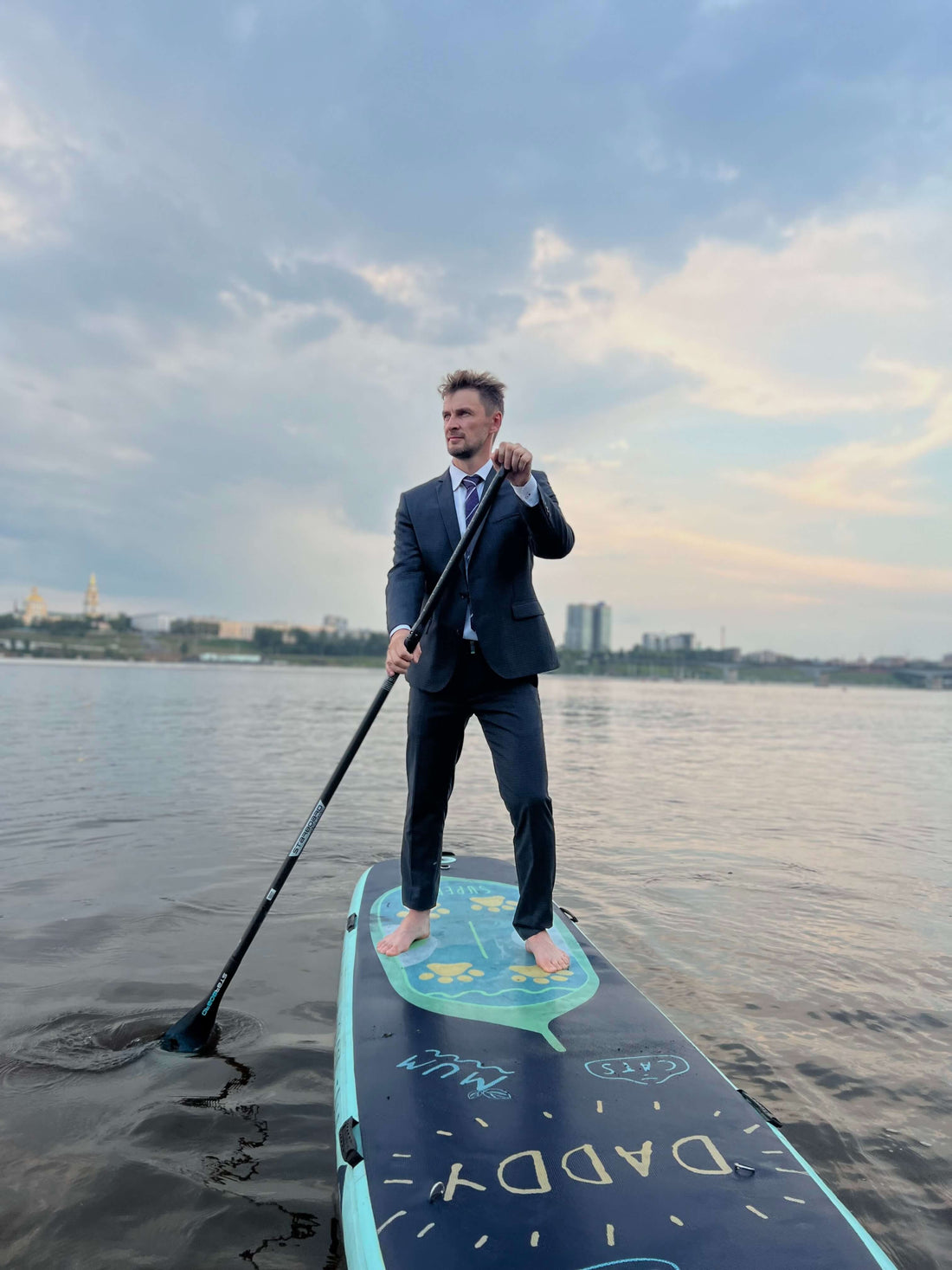With the temperatures dropping in the Winter, this leads to a lot of paddlers deciding to stop heading out onto the water. But with the right kit there is no reason to stop and to continue to enjoy the outdoors and the beautiful scenery that comes with winter paddling.
We are often asked the question ‘What do you wear for Winter paddling?’ Below is a general guide and to remember to prepare properly as conditions do change unexpectedly.
Wetsuits (Neoprene)
These come in various thicknesses and for winter, a long sleeved wetsuit is recommended with a rash vest underneath.
A wetsuit works by trapping a thin layer of water between your body and wetsuit and this layer of water is then warmed by your body.
Wetsuits usually have a different neoprene thickness, with the thicker neoprene covering the main body areas for warmth. This will mean the thicker the wetsuit, the more restricted your movement might become. For example, a 5:3 wetsuit will have 5mm neoprene in the central body and 3mm elsewhere for flexibility.
Wetsuits come with either a back zip or a chest zip and are a personal preference to which one you prefer.
In the ideal world we would have a Summer and Winter wetsuit, but if you are on a budget you may want to consider when you will be using it and how often before deciding which one to purchase.
Drysuit
As the name suggests a drysuit works by keeping the water out and designed to protect you, where as a wetsuit are not designed to keep you dry.
With a drysuit you can wear layers or a fleece suit underneath. Most dry suits have built in dry socks which means no wet feet and they will stay dry all day.
The main advantage of a drysuit is the ability to wear thermal base layers underneath allowing you to keep warmer. The neck and cuffs of a dry suit feature strong seals to keep the water out and keep the wearer dry and warm.
Like a thicker wetsuit, with a drysuit your movement may become more restricted and it’s important to try to let as much air out as possible once you’re zipped up.
Dry suits are not the cheapest option, so before investing in one consider how frequently you would wear it, where you will be wearing it and the conditions you will be in.
Dry Suit Separates
There is the option to have a two-piece dry suit, which means you can wear just the top or bottoms separately. When wearing both together this will not give you the seal a dry suit will have but you can still wear layers and generally have better movement. These are great for kayakers, with being sat down, it gives a better flexibility.
Rashvests
These can be worn under wetsuits to offer extra warmth and prevent chaffing. These come in short sleeved and long sleeved and for Winter you can get thermal rash vests. If you did
have a summer wetsuit a thermal rash vest underneath will give you the extra warmth. Rash vests can also be worn in the Summer and will offer some UV protection.
Cagoule
These are ideal as an extra layer to keep the wind off. You may not need it on all the time but should be carried with you in a dry bag in case of weather changes they are also ideal to put on if you do take that unexpected dip.
Water shoes
These have a grippy sole and come in various mm thickness. These are ideal for protecting your feet and will also help keep your feet warm. Do bear in mind if you are paddleboarding the thicker the footwear the less feel of contact you will have with the board.
Hats
‘We lose most of our heat through our heads’ is a saying most of us have heard. The real reason we lose heat through our heads is because most of the time we’re outside in the cold, the rest of our body is clothed, leaving the head uncovered.
A neoprene hat which can be worn on their own or under a thermal hat/helmet will keep you warm even if they end up getting damp, or a normal bobble hat will ensure your head remains warm.
Even if you are not wearing a hat, put one in your drybag just in case of sudden weather changes.
Gloves
There are various neoprene gloves available in different thicknesses to help protect your hands from the elements and help keep them warm when paddling. If you suffer with circulation in your hands these are recommended. One thing to consider with gloves, the thicker the gloves will help keep you warmer but may reduce your dexterity and feel for your paddle.
Buoyancy Aids (BA) – sometimes called personal flotation device – PFD
This is an essential piece of kit for any paddler and is an important piece of live saving equipment. A Buoyancy Aid assumes the wearer can help keep themselves afloat to some degree and are designed to help you swim and get back into/onto your paddle craft.
They are comfortable and allow the user full movement whilst a water based activity is carried out.
There are a variety of BA’s but the most important thing is that your BA is comfortable and fits you well and is made to meet safety standards.
BA’s are available for the recreational paddler to touring and white-water. If planning on doing longer journeys it is worth considering if there are pockets in your BA to put essential items in – for example your mobile phone. It is recommended you try a BA on to check your sizing before purchasing.
Everyday can be different on the water, with sudden changes in the weather and temperatures it is best to be prepared and enjoy your time paddling. We have tried to give you an idea of appropriate clothing suitable for Winter paddling.
If you would like more information or to discuss your own needs, please get in contact. Our staff are highly experienced and would be happy to advise.
Our EpicLife shop stocks various items and you are welcome to come and browse and discuss the items with us.

